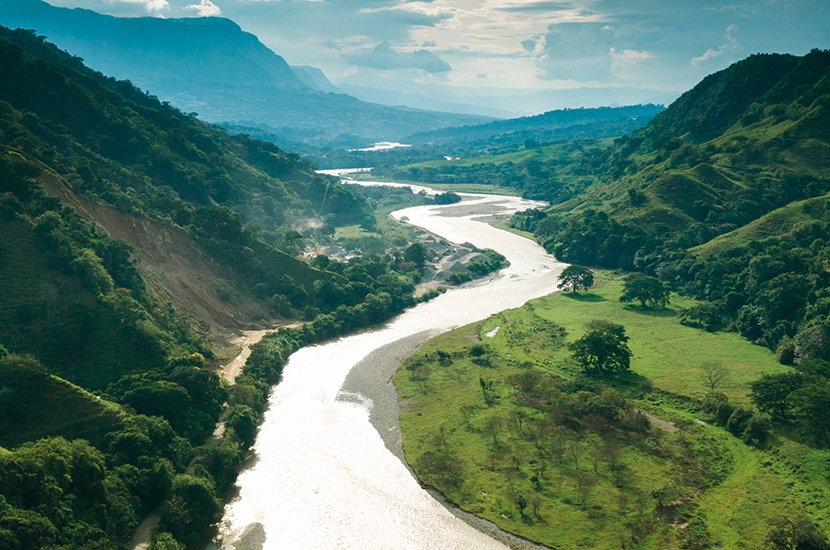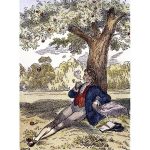As Colombia comes out of 50 years of civil war and into a still precarious peace with some 220,000 dead, this timely book explores one of the few dividends to emerge from a terrible conflict.
Large areas of the country were isolated by war, and spared the ravages of modern development. Unlike neighboring Ecuador, where oil and gas exploration has done its worst, Colombia still has an essentially roadless expanse of pristine forest nearly the size of France.
When I traveled in the mountains near Cali last year, I was struck by how depopulated the rural areas were. The peasant farmers, the campesinos, were only slowly returning from their exile in the comparatively safer cities. Many Colombians, weary of the ideologies of left and right that perpetuated the conflict, have turned instead to working in local community groups to reclaim the land and start up farmers’ markets. Much of the country is still best traveled by the same mule tracks the conquistadors used to transport goods, with small way stations providing welcome doses of aguapanela, the hot bowl of raw cane sugar and lemon which is the energy drink of the Colombian interior.
Wade Davis is well placed to write what he describes as a love letter to Colombia. He first came here as a teenager almost 50 years ago and has been returning ever since, often working with botanists, such as Richard Evans Schultes, the subject of the film Embrace of the Serpent. When Davis tells you about yopo, the seeds of a forest tree that contain one of the most powerful hallucinogenic agents known to man, a tryptamine ‘that does not distort reality as much as dissolve it’, you know he speaks with authority.
He decides to follow the entire length of the Magdalena River for 1,000 miles, right through Colombia from the Andes to the Caribbean. Four out of every five Colombians live within its drainage, and it is the source of 80 percent of the nation’s economic wealth. Rather like the Mississippi, it has inspired songs, books and an entire river culture. In Gabriel García Márquez’s Love in the Time of Cholera, the reunited lovers travel up the Magdalena on a steamboat for a final journey together. Simón Bolívar traveled down it as he lay dying in a hammock, disowned by the people he had liberated.
Recently, the river has also had a dark side. During the civil war, bodies were often dumped in it, wrapped in carpets. By the time the fishermen found the corpses downstream, the only way of telling the two sides apart were the rubber boots worn by the Farc guerrillas.
Davis first intends to begin his journey at the river’s actual source, a lake, but then decides that this is a pointless gesture:
‘The entire Macizo that we were on was in fact the source of the Magdalena: the water that soaked our feet, the clouds that burst over the valley, the veil of rain that obscured the contours of the lake and swept across the face of every mountain, the very mist before our eyes — all of it would eventually condense and coalesce in one of the many thousands of streams, brooks and springs that fall away to give rise to the river.’
A short way downstream, he arrives at the pre-Colombian ruins of San Agustín. It took the Spanish 250 years to find them. Many of the figures seem to be under some form of shamanic influence, metamorphosizing into jaguars, often with a wad of coca stuck in their cheeks.
Coca and cocaine have of course been baleful influences on modern Colombia, but Davis is particularly good on the beneficial effects coca leaves can have in their raw form — ‘more useful and less irritating than coffee, chocolate or black tea’. He is also fair-minded enough to pay unfashionable tribute to the courage of the conquistadors, plagued by disease and reduced to gnawing on boot leather and saddlebags for sustenance — however grave the horrors they also unleashed on unsuspecting tribes such as the Muisca, who created the fine gold jewelry that gave rise to the seductive and dangerous myth of El Dorado.
It is curious that the Spanish conquest of Colombia should be so less known than the conquests of Mexico and Peru, even though Colombia yielded more gold and wealth. William Prescott, for instance, who wrote such memorable accounts of those first two countries, never turned his attention there. This is partly due to the lack of capable chroniclers, and also perhaps to the sheer exhaustion faced by anyone who tried to penetrate the country’s dense geography.
Davis has had plenty of time to do so. This book is the culmination of a lifetime’s work in the country and is suffused with a love and knowledge that only such long acquaintance can bring. His hope is that the new ecological spirit abroad in Colombia may lead to a cleansing of the river Magdalena itself, which is currently heavily polluted. As a symbol of the country, this would be as much a metaphorical as a physical purification.
This article is in
The Spectator’s October 2020 US edition.


















